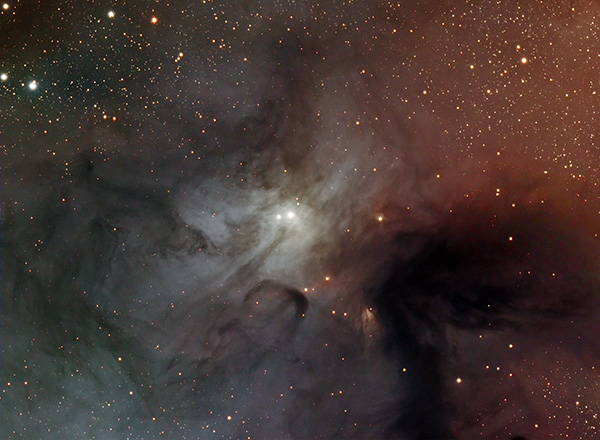IC4603Location: Warrumbungle Observatory, Australia (149 11 E, 31 16 S) Date: Various dates during March 2012 Camera: QHY-9 Telescope: William Optics M120 Frames: Seventeen 600 second exposures in luminance and forteen 300 second exposures for each of RGB. Processing: Stacked in CCDStack, balanced, curves, highlights and sharpened Photoshop SC5. Text from APOD: Why does this starfield photograph resemble an impressionistic painting? The effect is created not by digital trickery but by large amounts of interstellar dust. Dust, minute globs rich in carbon and similar in size to cigarette smoke, frequently starts in the outer atmospheres of large, cool, young stars. The dust is dispersed as the star dies and grows as things stick to it in the interstellar medium. Dense dust clouds are opaque to visible light and can completely hide background stars. For less dense clouds, the capacity of dust to preferentially reflect blue starlight becomes important, effectively blooming the stars blue light out and marking the surrounding dust. Nebular gas emissions, typically brightest in red light, can combine to form areas seemingly created on an artist's canvas |
|
 |
All images and content are copyright. You are free to use material for private use. This does not include placing any material on other websites.


